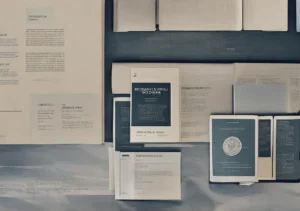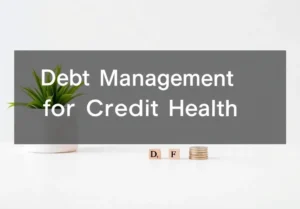
Countless people feel overwhelmed by debt, but common mistakes can keep them trapped in the cycle. Knowing what to avoid when tackling debt can make all the difference in achieving financial freedom.
To get out of debt effectively, it’s crucial to sidestep these pitfalls: neglecting budget discipline, relying on credit cards for everyday expenses, and not seeking professional help. Recognizing these errors is just the beginning; there’s much more you can learn to accelerate your journey to financial stability. Curious? Let’s dive in!
Key Takeaways:
- Create and stick to a budget that prioritizes high-interest debts, using methods like the debt snowball or avalanche to stay motivated.
- Build an emergency fund to prevent falling back into debt when unexpected expenses arise.
- Stay proactive by tracking your progress, seeking professional help when needed, and making informed, rational financial decisions.
Disclaimer: Information on this blog is for general educational purposes only and does not constitute personalized financial advice. Always consult a qualified financial advisor before making any financial choices.
1. Ignoring the Importance of a Budget
A budget isn’t just a helpful tool; it’s your roadmap out of debt. Establishing a budget allows you to see exactly where your money’s going and how much you can allocate toward paying off debt. Start by tracking your monthly income and expenses.
List out fixed expenses like rent, utilities, and groceries alongside variable ones like entertainment and dining out. After that, determine how much you can comfortably set aside for debt repayment. Prioritizing your payments is key—focus on high-interest debt first, and consider using the snowball method to gain momentum by paying off smaller debts quickly.
Make sure to revisit and adjust your budget regularly. Life changes, and so should your budget. It’s not just about arithmetic; it’s about creating a financial plan that works for you.
2. Underestimating Total Debt
Not all debts are created equal, and underestimating your total debt can derail your repayment efforts. It’s crucial to get a complete picture of what you owe, including credit cards, loans, and any other obligations.
Start by gathering all statements and creating a comprehensive list. Include:
- Credit card balances
- Loan amounts (student loans, auto loans)
- Any personal loans or payday loans
Once you have an exact figure, it becomes easier to create a manageable repayment strategy. Knowing how much you actually owe gives you the power to negotiate terms with creditors or consider consolidation options.
It’s also a good idea to look at the interest rates attached to your debts. This understanding can guide you in deciding which debts to tackle first, allowing you to save money in the long run. Having an accurate snapshot of your total debt not only helps you make better financial decisions but also reduces anxiety as you face your repayment journey head-on.
3. Relying on Credit Cards
Using credit cards while trying to get out of debt is like trying to put out a fire with gasoline. When you’re already battling debt, swiping that card can lead to more financial woes.
Even if you’re tempted to use a credit card for emergencies or necessities, it’s crucial to step back and think strategically. Instead, consider building an emergency fund to handle unexpected costs without falling back into debt.
One practical way to curb credit card reliance is to switch to using cash or a debit card for daily expenses. This approach creates a tangible connection to your spending, making it easier to track and maintain a budget. If you simply must keep a credit card on hand, choose one with no annual fee and keep its limit low. This keeps you accountable without leaving you vulnerable to high interest rates.
4. Making Only Minimum Payments
Just making those minimum payments can feel like you’re progressing, but it’s a trap that often leads to prolonged debt repayment.
The longer you drag out payments, the more interest you’ll pay, turning what could be a manageable debt into a long-term burden.
Making only minimum payments on credit cards can significantly extend the repayment period and lead to accumulating substantial interest. Studies indicate that a typical cardholder who pays just the minimum can end up paying two to three times their original debt due to the compounding interest over time.
To combat this, consider the debt snowball or avalanche method for paying off debts efficiently. With the snowball method, you tackle the smallest debts first, gaining momentum as each balance is eliminated. The avalanche method focuses on tackling the highest interest debts first, which saves you the most money in interest over time.
To make things even clearer, jot down your debts, interest rates, and minimum payments. Set up alerts for upcoming due dates to avoid late fees. If possible, increase your payments slightly. Even an extra $20 a month can make a difference in interest accrued.
Every little bit counts toward freeing yourself from the grip of debt.
5. Not Prioritizing High-Interest Debt
Ignoring high-interest debt can be a slippery slope that tightens your financial grip over time. Always tackle debts that eat into your finances the most.
If you have multiple debts, start by listing them and identify those with the highest interest rates—often credit cards.
Here you can use the avalanche method: focus on making extra payments toward the highest-interest debt while keeping minimum payments on others.
The avalanche method works by targeting the highest-interest debt first, which reduces the overall interest burden over time. For example, suppose you have two debts: a credit card with a balance of $5,000 at an interest rate of 20% and a personal loan of $10,000 at an interest rate of 10%. If you allocate an extra $200 monthly to the credit card while making minimum payments on the personal loan, you will pay off the credit card more quickly. This reduces the total interest paid, as the higher-rate debt is eliminated first, demonstrating the effectiveness of focusing on high-interest payments first.
This strategy reduces the total interest you’ll pay and can save you a good chunk of change in the long run. Make it a habit to regularly review your debts; interest rates can change, and refinancing options might become available.
Don’t forget: personal loans or even certain types of student loans can carry hefty interest, too, so keep an eye on them as you structure your repayment plan.
6. Failing to Track Progress
Losing sight of your progress can lead to discouragement and derail your commitment to getting out of debt. To stay on track, establish a tracking system that works for you, whether that’s an app, a spreadsheet, or a simple pen-and-paper method.
Break it down: Set specific, measurable goals—like paying off a particular debt by a specific date. Check your progress monthly and celebrate those small wins. Each time you pay off a debt or hit a payment milestone, treat yourself to something simple, like a movie night at home or a favorite snack; it’ll keep your spirits high.
You can also share your goals and progress with a friend or in an online community. This added layer of accountability might just give you that extra push you need. Seeing how far you’ve come can be incredibly motivating and keeps your eyes on the prize.
7. Avoiding Professional Help
Not ever financial issue needs an advisor, but it just so happens that ignoring financial professionals can be a major misstep on the path to debt freedom. Professional guidance can uncover effective strategies you might not have considered.
If your debts feel overwhelming, consulting a financial advisor can help you create a tailored plan.
Financial advisors provide a comprehensive overview of one’s financial situation, identify various debt management strategies tailored to individual circumstances, and assist in prioritizing debt repayments. For instance, they can help develop budgets that accommodate necessary expenditures while enabling effective debt repayment. Additionally, they offer insights on consolidating debt, which can simplify payments and potentially reduce interest rates, allowing for more efficient debt management.
Consider seeking help if you’re struggling with budgeting or facing multiple debts. Look into services like credit counseling, which can offer personalized support. These experts can negotiate with creditors on your behalf or help organize your debt repayment strategy. Remember, it’s not a sign of weakness to ask for help; it’s a smart move to get back on track.
Also, don’t be afraid to explore other resources like online financial planning tools or local workshops. They can provide insights into budgeting and managing debt effectively. Keeping yourself informed and proactive can open the door to better management practices and, ultimately, financial freedom.
8. Neglecting an Emergency Fund
Lacking an emergency fund is like playing financial roulette. One unexpected expense—like a car repair or a medical bill—can send you right back into the debt spiral. Without a cushion, it’s all too easy to swipe the credit card, compounding your debt issue.
Start small. Aim to save just $500 to $1,000 as a safety net. This doesn’t need to be put together in a week; set aside even a little bit from each paycheck.
You could also consider these actionable steps:
- Automate savings: Set up automatic transfers from your checking account to a separate savings account right after payday.
- Cut out non-essentials: Look for minor expenses you can eliminate to funnel that money into savings.
- Use windfalls wisely: Tax refunds, bonuses, or side hustle income can all bolster your emergency fund quickly.
When you build up this financial buffer, you’re less likely to rely on credit cards when life throws a curveball. An emergency fund gives you peace of mind and shields you from accumulating more debt.
9. Making Emotional Decisions
Stress and fear can cloud your judgment, especially when dealing with debt. Rushing into decisions based on momentary feelings can lead to costly mistakes.
For instance, you might consider taking a high-interest loan just to get some quick cash relief. Instead of making impulsive moves, take a step back. Create a budget and outline your debts clearly.
Look at your financial situation objectively: list each debt with its interest rate, monthly payment, and balance owed. This allows you to see the big picture and make informed choices.
Remember, it’s crucial to separate emotions from financial decisions. If you’re feeling overwhelmed, chat with someone you trust, or consult a financial advisor. They can provide a fresh perspective and help ground your decisions in practicality.
10. Lack of Long-Term Planning
Focusing only on short-term relief can keep you stuck in a debt cycle. This approach often neglects what’s next after the immediate problem is solved. Think about where you want to be in five or ten years. Picture yourself debt-free and financially secure.
To avoid this pitfall, create a long-term blueprint for your finances. Here’s how:
- Set Concrete Goals: Define what becoming debt-free looks like for you. Is it eliminating all credit card debt or saving for a home?
- Break It Down: Divide these goals into milestones. If your goal is to pay off $20,000 in debt, figure out how much you need to pay each month to reach that goal within your timeline.
- Emergency Fund: Start building a small emergency fund, even if it’s just $500 to $1,000. This can prevent future debt from unexpected expenses.
- Review Regularly: Set aside time monthly to review your progress. Celebrate the small wins; they’ll motivate you to keep going.
This strategy helps you stay focused not just on paying off debt, but also on building a financially healthy future. That way, you’re not just escaping the debt trap but also constructing a safety net for yourself.
Quick Q&A
-
What’s the best method to start paying off debt? The debt snowball method works wonders; pay off the smallest debts first for quick wins. The avalanche method is up there as well.
-
How often should I check my credit score? Regularly, ideally monthly. Keeping tabs helps catch errors and stay motivated.
-
Is it better to pay off debt or save for retirement? Prioritize high-interest debt first, then set aside for retirement. Balance is key.
-
Can negotiating with creditors help reduce debt? Yes! Many creditors are open to negotiating lower payment plans or interest rates.
-
What happens if I can’t make a payment? Communicate with the lender immediately; many offer options like forbearance or payment plans.
As a financial advisor, my goal is to guide you through the world of personal finance with clear, practical advice. With a dedication to clarity and your financial well-being, I’m here to provide insightful guidance and support as you build a foundation of wealth and security.



